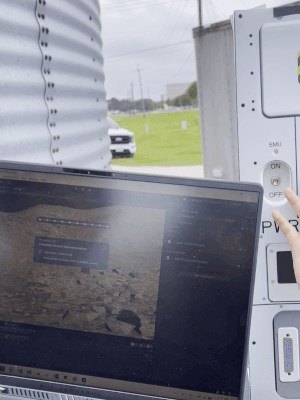
NASA SUITS Challenge
2022 Fall ~ Present
As technology advances, so do the systems that support us. NASA aims to gather ideas for their future spacesuits by hosting the NASA Spacesuit User Interface Technologies for Students (SUITS) Challenge.
As the Project Manager, I am proud to say that we were 1 of 10 national finalists selected to participate in 2023 and this year in 2024 as well. For 2023, we designed for the moon. In 2024, we will be designing for Mars.
RISD SUITS 2023
Role: Project Manager
The Team: 10 Designers & 5 Developers
Timeframe: Sept 2022 ~ May 2023
Device: Microsoft Hololens 2
Platform: Unity + MRTK3
Design Opportunity
How might we design an AR interface for NASA engineers to confidently navigate the moon on future Artemis missions?
The Challenge
Spacesuit User Interface Technologies for Students (SUITS) challenges students to design and develop an augmented reality (AR) display for NASA’s researchers to test for the sake of astronauts on future Artemis moon missions. The AR interface is built into the spacesuit and should provide an intuitive, seamless experience.
NASA documentation states that the mission consists of four parts:
Egress: Prepping the astronaut’s exit from the spacecraft to the moon via an Umbilical Interface Assembly (UIA)
Navigation: Guiding the astronaut across the Lunar surface to carry out mission objectives and drop points of interest (POI).
Rover Commanding: Directing an autonomous vehicle to POI.
Geological Sampling: Display scientifically relevant data about lunar geology.
The User
Edward Michael Fincke
Astronauts
We are designing this system to assist our astronauts in their mission critical tasks on the moon and beyond. According to interviews that we have conducted as a team, we have determined that these brave souls are highly trained individuals with a very systematic mindset. Therefore, I have planned along with the other leaders for this application to be as light weight and unobtrusive as possible so that our user will have the best chance at completing tasks in a timely manner in order to fit the greatest number of tasks into their limited oxygen supply outside the pressurized habitats. After personally asking Col. Fincke to get some information on his work environment on the International Space Station (ISS), we believe we have a good understanding of what will be the most important elements in our design.
User Needs
We used the Mixed Reality Toolkit and Unity Engine to implement our designs from Figma onto the Microsoft Hololens 2, an AR headset worn with the astronaut’s spacesuit.
Research into the previous 2022 design shows that the user’s confidence is higher when the program guided them through a linear progression throughout the spacewalk. Showing only the current and upcoming tasks prevented information overload.
We have eliminated as many precise tapping buttons as possible because the HoloLens only registers broad hand motions due to the bulkiness of the astronaut gloves.
Our AR display aims to guide the user through their tasks safely and efficiently, responding to head and arm movements while stationed outside of the user’s field of view.
Prototyping
As a leader, it was my responsibility to divide the RISD SUITS members into 4 design teams and 1 development team to conquer the multiple objectives the challenge had to offer.
Journey Mapping
Sketching
Possibly the most important thing that designers had to do in order to rapidly produce ideas that can them be turned in to a wireframe in a later step. Constraints were given at this time to give a better understanding of what gestures could actually be pulled off when in the hands of an astronaut confined to the space inside their suit. One example is the inability to move individual fingers due to the pressure differences between the suit and the vacuum of space.
Wireframing
This is an aid to the developers so that they have an accurate understanding of what the vision of the designers are. This began at the same time that the sketches were happening due to the different paces at which some of the teams were operating at. This in turn allowed for the segmented development of each component allowing for better efficiency within the limited development timeframe.
Consistency
Assets were created at this point to unify the design as the developers are hard at work implementing the features that were part of the wireframing. Since the initial wireframe was made using Microsoft provided assets, we though the need to add a little RISD flair to the design to make for easier viewing and interaction.
Field and User Testing
Many unexpected problems arose during this time. We made sure to test our programs as often as we can in a comparable environment to ensure the best performance in Houston.
Test Week (5/18 ~ 5/23)
Our team was invited to fly down to the Johnson Space Center in Houston for a week of in-person mentorship. After two rounds of testing our program at the Rock Yard, NASA’s simulated environment of the moon, we made quick changes to our design before presenting it to a group of panelists on the last day.













































